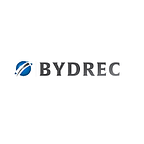What’s the Effect of System Development Life Cycle On E-Commerce?
eCommerce has impacted the world, giving rise to new business ventures and increased competition. The term “ system development life cycle ,” or SDLC, is frequently tossed around when discussing an eCommerce site software development process. Still, many people have only a vague idea about what the process entails.
There are numerous steps involved in the eCommerce development stage, starting with effective planning, requirement analysis, front-end and back-end development, testing, and deployment.
At , we know the system development life cycle is a long-term embedded concept in software engineering and the world of Information Technology in general. The system development life cycle helps alleviate the complexity of developing an information system from scratch within a structured framework that helps shape the project and manage it easily.
The SDLC, apart from covering the technical aspects of an eCommerce system’s development, also encompasses activities such as process and procedure development.
According to Techopedia, “various SDLC models have been created and can be implemented, including Waterfall, Rapid Prototyping, Incremental, Spiral, Fountain, Build and Fix, Synchronize and Stabilize, and Rapid Application Development (RAD).”
SDLC is therefore made up of multiple steps. However, there is no concrete set number of steps involved, and around seven or eight steps appear commonly.
Code-Build-Test-Release-Operate
With market competition growing, it means that consumers don’t wait for eCommerce platforms to get it right — they switch to alternatives better capable of delivering new features as demands arise. The traditional SDLC approach is ‘Code-Build-Test-Release-Operate.’ In the real world, that’s equivalent to the impossible task of predicting the ever-evolving future scenario with complete accuracy. The SDLC approach doesn’t account for ongoing changes or facilitate cross-functional collaboration. Market trends evolve rapidly and with minimal predictability or upfront warning signals.
SDLC Models
It’s worth considering the DevOps approach that combines every step of the SDLC. The fast, iterative, and agile development process focuses on more rapid delivery of new product features with low complexity to manage. The changes are entirely responsive to market needs — this is especially critical for eCommerce companies struggling to find the right direction in a prevalent midst of uncertainty. The Agile methodologies are one of the best candidates for e-commerce systems that incorporate the innovative and dynamic nature of the web. Bydrec is an expert at meeting Agile programming needs. The market trends evolve rapidly and with minimal predictability or upfront warning signals.
The benefits of understanding and aligning across the include:
- Save time and money
- Better customer experiences
- Efficient business processes
- Happy, high performing team
- Happy, converting customers
Originally published at https://blog.bydrec.com.
